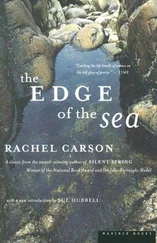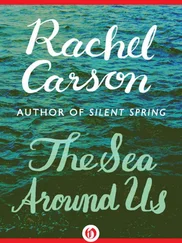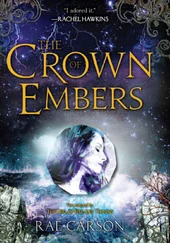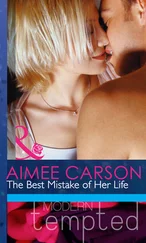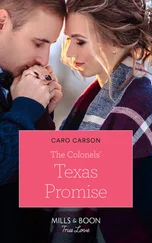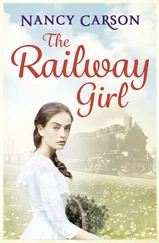Quite the diplomat, Tommy Geoghegan, I said drily to you, Nina. Oh, he’s not so bad if you get to know him, you said, that clumsy manner of his, it’s part of his charm, people tell him things because they think he’s guileless. Whether what they tell him is true, that doesn’t really matter. It’s all information, people reveal as much about themselves by their lies as they do the truth. Anything we know, at any given time, it’s as much disinformation, or misinformation, as it is information. More, sometimes. The edges are always fuzzy. Bluff and fuzz. Tommy Geoghegan fits very well into that picture. That’s why he’s one of us. One of you? I said. Yes, you said in a mock conspiratorial whisper, we have our people everywhere.
And then there’s Declan Tierney, you said, the time you told me about Tony Lambe’s tie emporium. He’s one. Declan Tierney? I said, the art dealer? Well, he’s the only Declan Tierney I know, you said. And, when I thought about it, I wasn’t entirely surprised. Declan Tierney had arrived on the art scene in Belfast seemingly from nowhere. Began dealing in those terrible Markey Robinson rip-offs, stylised Connemara landscapes, whitewashed cottages, doe-eyed Madonnas in shawls, that sort of thing, not that Markey himself was that much better than his rip-offs, but then Tierney moved on, got in with Gerry Byrne, went to all the graduate shows, began putting together a stable of young artists, cutting-edge stuff. Though there was always something dodgy about him, he tried to sell me what he called a Gerard Dillon once, claimed he picked it up from one of the Friday Market dealers who’d just made a house clearance in West Belfast. Maybe he did. But the painting wasn’t right. There’s a faux-naïf thing about Dillon’s brushwork, but this was just plain amateurish. Declan Tierney? I said, well, I suppose that figures.
And then there’s Archie Chambers, you said. Archie Chambers the ventriloquist? I said. Archie’s dummy was called Bernie Buttons, he was one of those Champagne Charlie dummies, with a rather predictable line in double entendres. You know the routine, Bernie says to Archie, May I have a goodbye kiss? And Archie says, Well, I can’t see any harm in that, and Bernie comes back with, Oh, I wish you would, a harmless kiss doesn’t sound very thrilling. Yes, Archie and Bernie both, you said, you’d be surprised how many of us there are. For instance, for all you know, you might be one too. Without my knowing it? I said. Yes, you said, without your full knowledge. Or consent, for that matter, you said. You’d learned to twin those words from me, it’s a Catholic concept, a mortal sin can only be committed with full knowledge and complete consent. Does anybody really know who they are? or what they are? you said. Billie Holiday was playing in the background, I can’t remember what song, but it occurs to me now, as I write, that ‘Wherever You Are’ is the title of a Billie Holiday song, recorded in 1942. Not her best song: the lyrics are trite, the music slightly incongruous, but, given what I presume to be their purpose — to offer comfort to American troops in Europe — perhaps the song is redeemed by that very banality, that all-inclusive ‘you’ which is both singular and plural:
Everywhere in every homeHope is burning brightWhile millions of heartsAre kneeling, saying, TonightWherever you areOur hearts are with you.
Wherever you areOur prayers are with you tooAll through the darknessOur faith is your guiding starMay God bless you allWherever you are.
So, wherever you are, Nina, I know that this wartime song must have been in your mind when you wrote those words to me. And wartime must have been in your mind when you booked us into the Hôtel Scribe in Paris, for in 1944 it was the HQ of the Allied press corps, which included Lee Miller, erstwhile model, photographer, a war correspondent for Vogue magazine, and one of your great heroines. And with all that in mind, I’ve been writing this letter with two pens, alternating them according to whatever voice I have in mind. One is a French pen, which came in a box bearing the inscription Porte-Plume Réservoir, which I take to be an elaborate synonym for the more usual word for fountain pen, stylo. The pen itself has no name stamped on the barrel, as is customary with good pens, but the classy 18 carat gold nib has ‘Paris’ engraved on it, and, in a diagonal cartouche, the initials D & D. Whatever they might stand for, I like their doubleness. It is a very elegant pen, and again, like the Swan, it is done in a mottled red and black wood-grain pattern, le rouge et le noir, that bears a striking resemblance to the Dinkie you wore when first we met. The other is an English pen, a Conway Stewart Scribe in Green and Black Candle-flame. Both were made in wartime. That first night in the Hôtel Scribe, before we went out for dinner, you dabbed a little perfume on your breast and wrists. The casement windows of our room on the fourth floor were open and the voile curtains billowed gently in that breeze that comes on at dusk, you’d ordered a great bunch of Easter lilies to be placed on the windowsill, and their scent mingled with yours, a bittersweet tang of aniseed and musk followed by jasmine, rose and bergamot, and, as I write this in blue ink, the colour of eternity, the nib of my French pen whispers across the page till it falls silent after these words, L’Heure Bleue .
I’m writing this in blue ink with an American Waterman’s Ideal fountain pen made in 1927, the year that Lee Miller, aged twenty, was about to step off a sidewalk in New York into the path of an oncoming car, when she was saved by a passer-by. When her panic had subsided, he introduced himself to her as Condé Nast, the owner of Vogue magazine. I’m writing this with the Waterman’s Ideal because its swirled faded green and amber colours are like those of a dress you wore in Paris, made of a billowy moiré tulle, that shimmered as you walked. You’d bought it for a song in the Friday Market, a copy of a Dior number you’d seen in a 1947 Vogue. And the pen also goes well with your postcard, the rusts and metallic grey-greens of the Turbine Hall of Bankside Power Station before its conversion to the Tate Modern Gallery in 1997. Not to mention the tawny fleck in one of your green eyes.
At first I took your message, Feeling blue , to be a reference to a song, but when I thought of it in the context of the Tate Modern, I knew that you meant me to think of Yves Klein’s IKB 79, which hangs at this moment in the Tate Modern, and which we both saw in the old Tate in October 1982. It consists of nothing more than blue paint applied to a canvas-covered plywood panel some five feet by four, one of almost two hundred such monochrome paintings made by him before he died from a hereditary heart condition in 1962, aged just thirty-four. Klein had left these works untitled, but his widow posthumously numbered them IKB 1 to IKB 194, a sequence which did not reflect their chronological order, possibly because even she could not determine when each had been composed. The letters stand for ‘International Klein Blue’, registered by Klein as a trademark in 1960. He had long been fascinated by the incandescent luminosity of pastel colours. In the early 1950s, noting how the glow of pigments in their powder forms invariably dimmed when mixed with oil to make a paint, Klein had begun a quest to find a means of preserving what he called the ‘affective magic’ of the colour. In 1955 he found the solution: a colourless fixative called Rhodopas M60A, manufactured by the Rhône-Poulenc chemicals company, consisting of a vinyl chloride resin, thinned with ethyl alcohol and ethyl acetate. When M60A was mixed with a pigment and applied to a surface, the highly volatile ethyl derivatives would evaporate, leaving behind the pure colour suspended in the transparent resin.
Читать дальше


